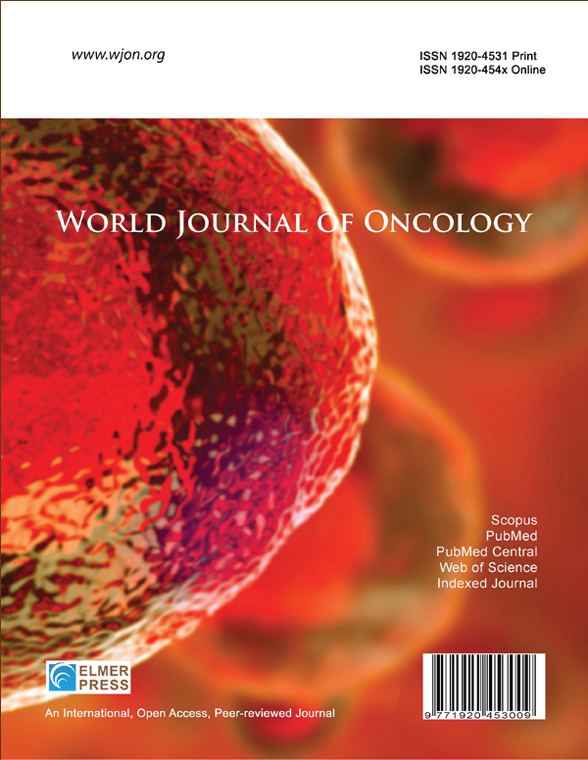Time to Treatment Initiation of Lung, Breast, Colorectal, and Prostate Cancers and Contributing Factors From 2015 to 2020 Utilizing Surveillance, Epidemiology, and End Results Program Database
DOI:
https://doi.org/10.14740/wjon2519Keywords:
Cancer, Time to treatment initiation, Health disparities, Sociodemographics, SEERAbstract
Background: The aim of the study was to identify the factors that cause delays in treatment initiation, such as race, gender, education, income status, and associated health comorbidities, as these can increase mortality.
Methods: We utilized the Surveillance, Epidemiology, and End Results (SEER) database to identify contributing factors such as sociodemographics that impact time from diagnosis to treatment initiation (TTI) in lung cancer, breast cancer, colorectal cancer (CRC) and prostate cancer from 2015 to 2020 in 991,772 patients. Variables studied included age, sex, race, marital status, geographic location, household income, stage, and grade. Two-way analysis of variance (ANOVA) was utilized to determine if significant differences existed between the effects on TTI with respect to the variables. TTI was measured in months. Based on the aforementioned variables, propensity scores were created for odds of receiving late treatment exceeding 1 month from diagnosis. Patients were matched 1:1. Based on the propensity score, a competing risk regression model was utilized to determine risk factors associated with late treatment.
Results: Similar trends were noted among all cancers. With respect to gender, in breast cancer, TTI was shorter in males (1.02 months) compared to females at 1.24 (P < 0.001). A longer time to TTI was noted in patients greater than 65 years with lung cancer (1.38 months, P < 0.001). Shorter TTI was evident across all cancers for White patients (P < 0.001). Shorter TTI was noted among married versus widowed, divorced, or single patients. Patients with lower income and non-metropolitan regions had shorter TTI among all cancers. More aggressive cancers had shorter TTI. Propensity matched competing risks hazard analysis revealed similar results with younger patients, those living in metropolitan regions, those earning greater than $35,000, and localized and well-differentiated cancers being at greater risk of having a treatment delay greater than 1 month.
Conclusion: Health disparities still exist today, and this becomes more evident in our study as age, sex, and race, among other factors, can cause delays in time from diagnosis of cancer to treatment initiation, potentially negatively affecting survival in these populations.

Published
Issue
Section
License
Copyright (c) 2024 The authors

This work is licensed under a Creative Commons Attribution-NonCommercial 4.0 International License.










